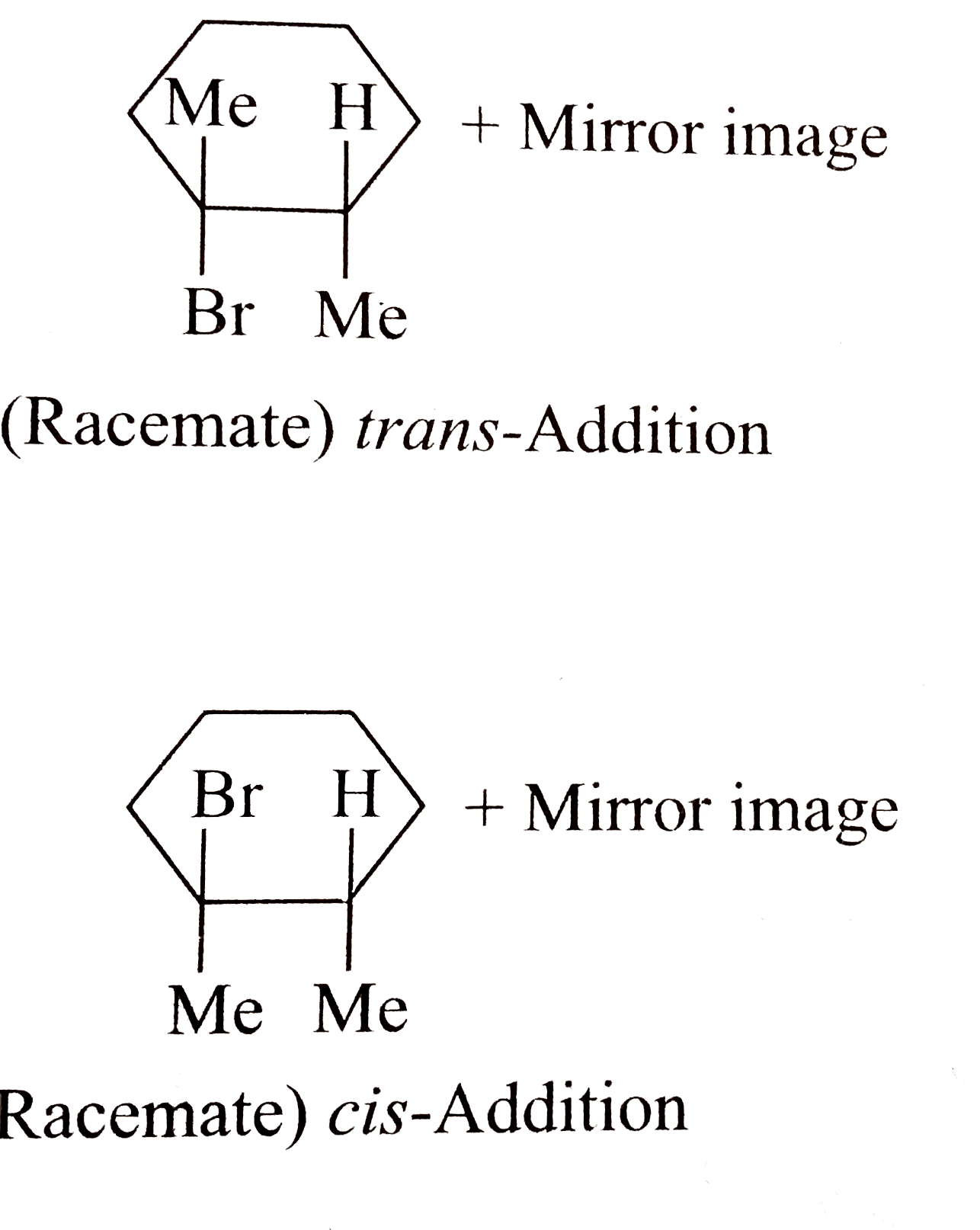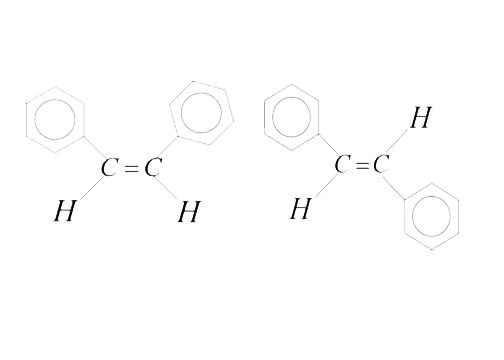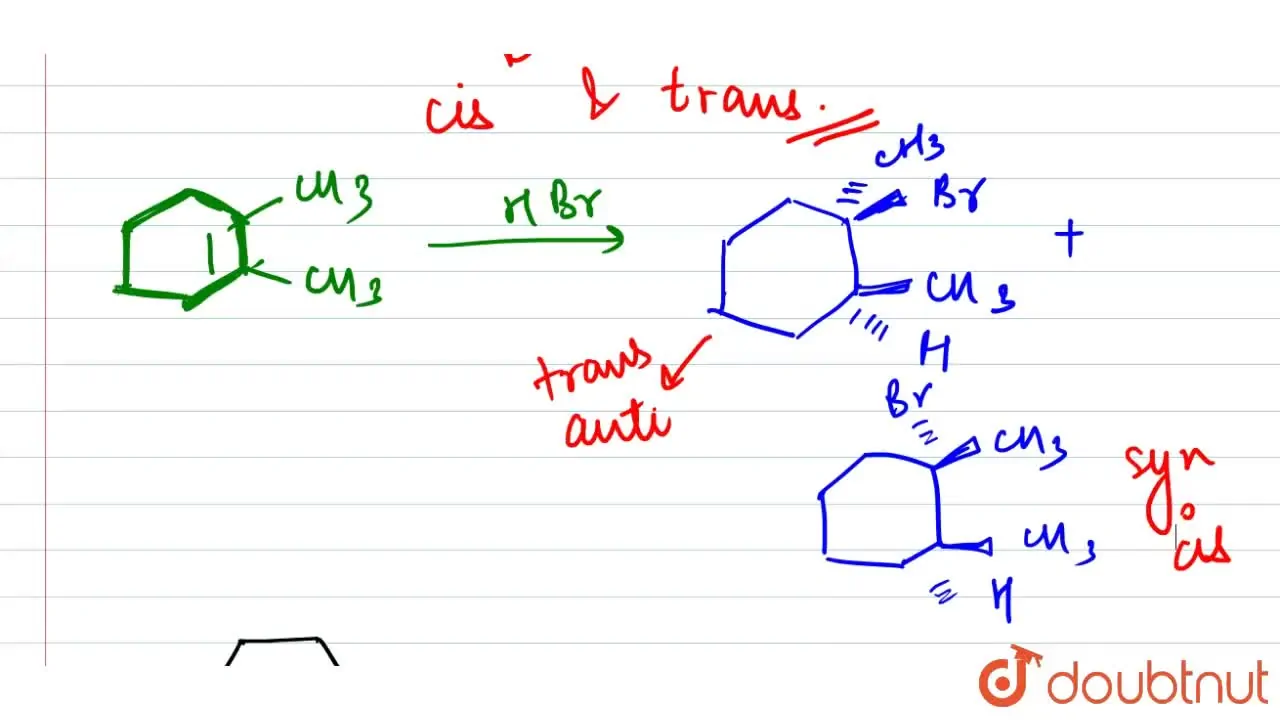1,2-Dimethylcyclohexene undergoes only trans-addition with HBr
in non-polar solvents but both cis-and trans-additions
occur with aq. Acid. Explain.
This sterospecific reaction proceeds through a bridged cation like the bromonium ion where H replaces Br. The intermediate may actually be a π -complex. In the absence of a solvent that can satbilise a free R⊕,BrӨ attacks the protonated complex from the opposite side resulting in trans (anti) addition.
In the case of a polar solvent such as H2O,the protonated complex collapses to the free R⊕, which now reacts from both sides (faces) and gives both cis− and trans-additions.
 .
.
Related Playlists
- BOOK - CENGAGE CHEMISTRY ENGLISHCHAPTER - ORGANIC REACTION MECHANISMEXERCISE - Subjective19videos
ORGANIC REACTION MECHANISM
- BOOK - CENGAGE CHEMISTRY ENGLISHCHAPTER - ORGANIC REACTION MECHANISMEXERCISE - Comprehension35videos
ORGANIC REACTION MECHANISM
- BOOK - CENGAGE CHEMISTRY ENGLISHCHAPTER - ORGANIC REACTION MECHANISMEXERCISE - Analytical and Descriptive6videos
ORGANIC REACTION MECHANISM
- BOOK - CENGAGE CHEMISTRY ENGLISHCHAPTER - NCERT BASED EXERCISEEXERCISE - Chemical Equilibrium73videos
NCERT BASED EXERCISE
- BOOK - CENGAGE CHEMISTRY ENGLISHCHAPTER - P-BLOCK GROUP 13 - BORON FAMILYEXERCISE - Exercise Archives (Subjecive)9videos
P-BLOCK GROUP 13 - BORON FAMILY
Similar Questions
Write the structures of cis- and trans-isomers of but-2-enoic acid.
View SolutionWrite the structures of cis- and trans-isomers of but-2-enoic acid.
View SolutionWrite the structures of cis- and trans-isomers of but-2-enoic acid.
View SolutionEqual amounts of (e, e) and (a, a) conformers of trans-1,2-dichloro cyclohexane exist in non-polar solvents but the (e, e) conformer exists in polar solvents. Explain.
View SolutionWhich of the following, when undergoing addition of HBr, will form ONLY a pair of diastereomers ?
View SolutionThe addition of Br2 to trans-2-butene produces
View SolutionAssertion : cis -2- butene gives meso-2, 3-butanediol with dilute
alkaline KMnO4 solution.
Reason : Dilute alkaline KMnO4 solution gives trans addition with alkenes.View SolutionPolar covalent molecules exhibit dipole moment. Dipole moment is equal to the product of charge separation , q and the bond length d for the bond. Unit of dipole moment is debye. One debye is equal to 10−18 esu cm.
Dipole moments is a vector quantity. It has both magnitude and direction. Hence, dipole moment of a molecule depends upon the relative orientation of the bond dipoles, but not on the polarity of bonds alone. A symmetrical structure shows zero dipole moment. Thus, dipole moment helps to predict the geometry of a molecules. Dipole moment values can be distinguish between cis- and trans- isomers, ortho, meta and pare-forms of a substance, etc.
Q. Which is a polar molecule?View SolutionPolar covalent molecules exhibit dipole moment. Dipole moment is equal to the product of charge separation , q and the bond length d for the bond. Unit of dipole moment is debye. One debye is equal to 10−18 esu cm.
Dipole moments is a vector quantity. It has both magnitude and direction. Hence, dipole moment of a molecule depends upon the relative orientation of the bond dipoles, but not on the polarity of bonds alone. A symmetrical structure shows zero dipole moment. Thus, dipole moment helps to predict the geometry of a molecules. Dipole moment values can be distinguish between cis- and trans- isomers, ortho, meta and pare-forms of a substance, etc.
Q. Which is a polar molecule?View SolutionHow many statements are true for the following pair of compounds ?

Cis Trans
(i) The dipole moment of trans isomer is zero
(ii) The boiling point of cis isomer is more than trans isomer
(iii) Cis isomer is more stable than the trans isomer
(iv) These are also called configurational diastereomers
(v) These are readily interconvertible under normal conditions
(vi) The melting point of trans isomer is more than the cis isomer
(vii) Trans isomer is more soluble than cis isomer in polar solventsView Solution


